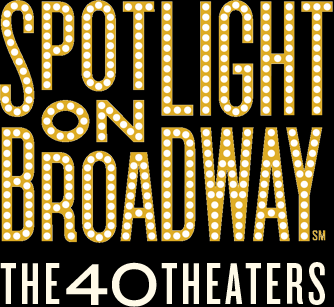Built in 1913, shortly before World War I, the Shubert Theater was built as a companion to the Booth.
Constructed by Lee and Jacob J. Shubert as the headquarters of their theatrical empire, it was named after their brother Sam S. Shubert, who died prematurely at age twenty-six in a railroad accident. Henry B. Herts’s designs for the Shubert and the Booth were carefully integrated even though their purposes were entirely different; the Booth was a small and intimate house for dramas and the Shubert, which could seat almost twice as many patrons, was designed for large musicals and had much more flamboyant interior decoration. The Shubert also contained two floors of offices above the theater, which continue to be used by the Shubert organization. Herts designed the theater in a Venetian Renaissance style with modern adaptations: heavy rusticated terra-cotta pilasters and arches and a curving corner entrance pavilion facing Broadway. At the time, building laws prohibited the projection of any part of the structure beyond the building line, so Herts cleverly used the sgraffito technique for ornamentation; several layers of colored cement were carved to create figured decorative panels. It is one of the few surviving examples of this decorative technique in New York City. The Shubert has always operated as a legitimate theater. It survived the Depression. and the great Depression-era song “Brother, Can You Spare a Dime?” debuted at the theater in 1933. Since then the Shubert has presented Pulitzer Prize–winning productions including Idiot’s Delight in 1936 and A Chorus Line, which opened in 1975 and played for fifteen years.




















